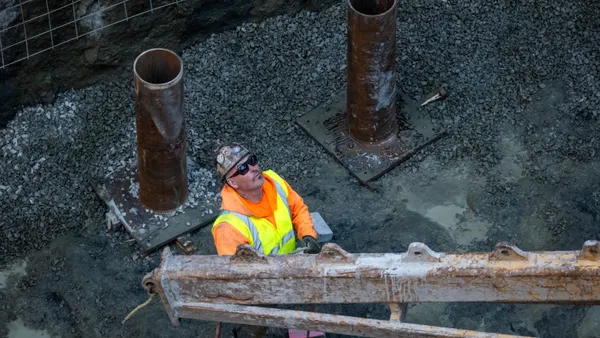Dive Brief:
- Housing starts increased 4.8% in June to an annual rate of 1.19 million units, rebounding from May's fall to a downwardly revised 1.14 million units, the Commerce Department reported Tuesday. Year over year, June housing starts lost 2%.
- Total new applications for building permits were up 1.5% last month to 1.15 million but down 13.6% from June 2015. In a breakdown of that total, applications for single-family permits rose 1% to 738,000, while multifamily permits were up 2.5% to 415,000.
- Multifamily construction starts rose 5.4% in June to 411,000 units, while single-family starts rose a 4.4% to 778,000 units, according to the National Association of Homebuilders.
Dive Insight:
June housing starts, according to Reuters, beat estimates by economists who said starts would rise to an annualized rate of 1.15 million units. "Builders are building," economist Joel Naroff told Reuters, but added that the pace of starts and building permit activity indicates the housing industry has "hit a lull."
Regionally, according to the NAHB,housing starts — including both single-family and multifamily — in the Northeast (46.3%) and West (17.4%) were up, while total starts fell in the South (-3.4%) and Midwest (5.2%). The number of permits issued in the Northeast (9.4%) and South (8.3%) increased in June, while permit activity in the Midwest (-2.8%) and West fell (-10.1%).
NAHB Chief Economist Robert Dietz said that June's numbers were in line with the association's expectations of a "gradual but consistent recovery." The housing market is making progress, NAHB Chairman Ed Brady said, but many builders feel they are at the mercy of higher regulatory costs and reduced lot options. That concern was reflected in the most recent NAHB/Wells Fargo Index report in which builder confidence fell one point from June to July. Index readings of builders' perceptions of single-family home sales, expectations for the next six months of sales and potential homebuyer traffic were all down slightly amid concerns around adequate lot supply, enough skilled labor and the cost of regulation.












